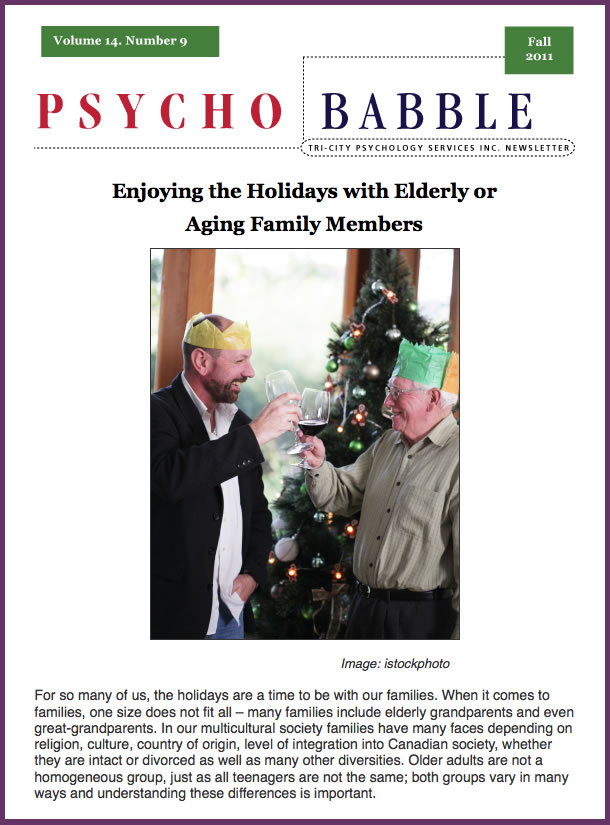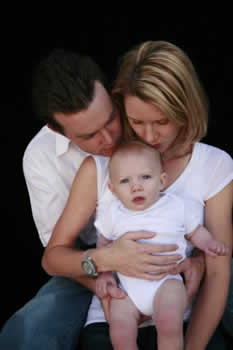Published: December 12, 2011

Image: Norma Desmond
ates of autism have exploded over the last 20 years. In exploring the phenomenon and its repercussions, Los Angeles Times staff writer Alan Zarembo interviewed dozens of clinicians, researchers, parents and educators and reviewed scores of scientific studies. Zarembo, along with Doug Smith and Sandra Poindexter of the Times data team, also analyzed autism rates and public spending on autism in California.
Part 1 of Alan Zarembo’s four-part series — Discovering Autism in the LA Times.
Autism can be difficult to understand and diagnose. People affected by the disorder talk about their day-to-day lives. http://www.latimes.com/news/local/autism/la-me-autism-vignettes-20111123-html,0,3099909.htmlstory
Source: LA Times
Published: December 8, 2011

Read in full: Enjoying the Holidays with Elderly Or Aging Family Members –http://eepurl.com/hGTtU
Published: December 8, 2011
Parenthood has been and remains a central aspiration among Americans. In surveys, most young Americans still say they would like to have two or more children. At the same time, a growing share of young women and men believe that a good marriage is personally unattainable, and more are raising children outside of marriage. As a culture, we remain certain about parenthood, but not so sure about marriage.
 Is it emotionally easier to parent alone in a world in which a good marriage seems increasingly out of reach?
Is it emotionally easier to parent alone in a world in which a good marriage seems increasingly out of reach?- Do married parents report more meaningful lives than their childless peers?
- Is parenthood itself an obstacle to a good marriage?
- What are the social, cultural, and relational sources of marital success among today’s parents?
Raising kids is a challenge, from the stresses of sleepless nights and toddler tantrums to teenage sullenness. Plenty of research has found that the arrival of a baby is associated with declines in self-reported happiness and marital satisfaction for many, and increases in depression for some.
However, more than one-third of married couples continue to thrive even after a baby comes along.
So what is the secret of their success?
According to a new “State of Our Unions” report from the National Marriage Project at the University of Virginia, in partnership with the Center for Marriage and Families, 10 aspects of contemporary social life and relationships – from sexual satisfaction to marital generosity to religious faith to shared housework – boost the odds of successfully combining marriage and parenthood.
The 2011 issue of “The State of Our Unions” is titled “When Baby Makes Three: How Parenthood Makes Life Meaningful and How Marriage Makes Parenthood Bearable.” Based on a new survey of 2,870 married men and women (ages 18 to 46), it examines the critical link between parenthood and marriage. The report is co-authored by W. Bradford Wilcox, an associate professor of sociology in the U.Va. College of Arts & Sciences and director of the National Marriage Project, and Elizabeth Marquardt, director of the Center for Marriage and Families. [continue reading…]
Published: December 6, 2011
 Older women with weaker circadian rhythms, who are less physically active or are more active later in the day are more likely to develop dementia or mild cognitive impairment than women who have a more robust circadian rhythm or are more physically active earlier in the day. That’s the finding of a new study in the latest issue of the Annals of Neurology.
Older women with weaker circadian rhythms, who are less physically active or are more active later in the day are more likely to develop dementia or mild cognitive impairment than women who have a more robust circadian rhythm or are more physically active earlier in the day. That’s the finding of a new study in the latest issue of the Annals of Neurology.
“We’ve known for some time that circadian rhythms, what people often refer to as the “body clock”, can have an impact on our brain and our ability to function normally,” says Greg Tranah, PhD., a scientist at the California Pacific Medical Center Research Institute – part of the Sutter Health network – and the lead author of the study. “What our findings suggest is that future interventions such as increased physical activity or using light exposure interventions to influence circadian rhythms, could help influence cognitive outcomes in older women.”
The researchers collected data on activity and circadian rhythm from 1,282 healthy women, all over the age of 75, who were taking part in the Study of Osteoporotic Fractures. All the women underwent a series of neuropsychological tests to ensure they had no evidence of cognitive or brain problems. At the end of five years 15 percent of the women had developed dementia and 24 percent had some form of mild cognitive impairment (MCI). Those women who had weaker circadian rhythm activity, lower levels of activity, or whose peak level of activity was later in the day, were at highest risk of developing dementia or MCI. [continue reading…]


 Is it emotionally easier to parent alone in a world in which a good marriage seems increasingly out of reach?
Is it emotionally easier to parent alone in a world in which a good marriage seems increasingly out of reach?
